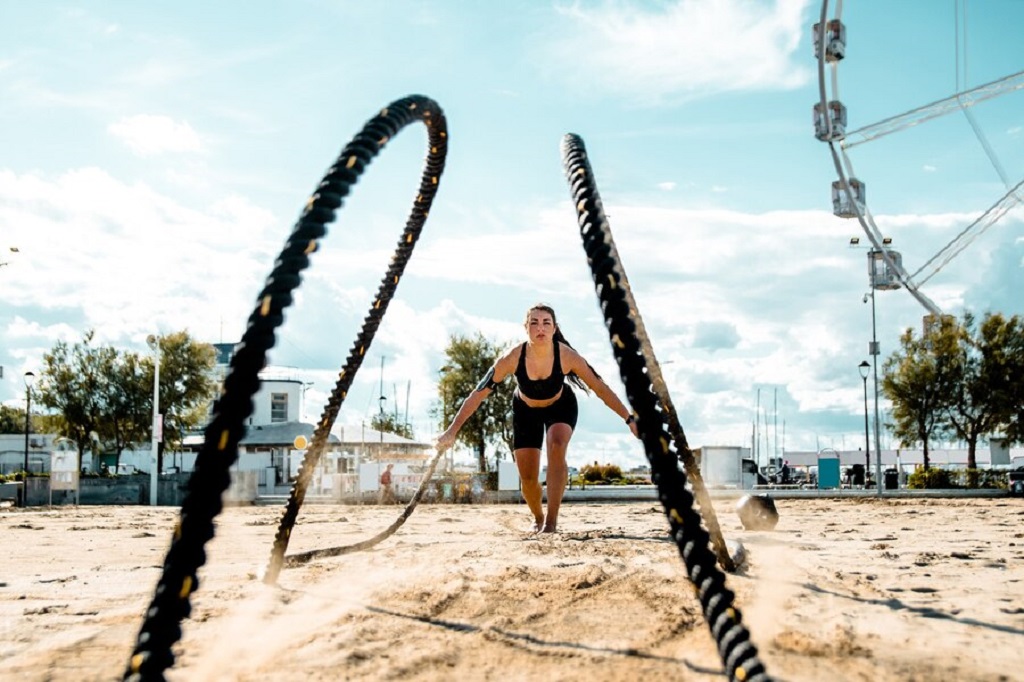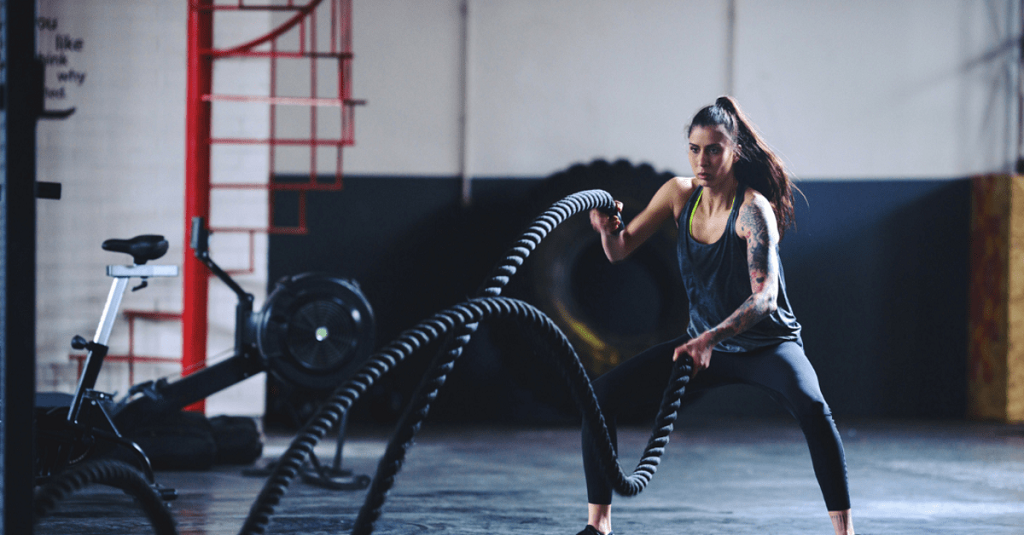
Hey there, fitness enthusiast! Have you ever wondered how to add a little spice to your workout routine? If the idea of hitting the same old gym machines or doing endless reps with dumbbells makes you yawn, then rope exercises might be the missing ingredient in your fitness recipe. They’re not just for sailors or climbers; anyone can benefit from incorporating rope exercises into their workout routine.
In this guide, we’re going to unravel the world of rope exercises, from what they are and how to do them to the incredible benefits they bring. We’ll also answer some burning questions you might have about this unconventional yet highly effective workout method. So, let’s get started and discover how rope exercises can transform your fitness journey.
What Are Rope Exercises?
First things first, let’s clarify what rope exercises actually are. No, we’re not talking about tugging on a random piece of string you found in your garage. Rope exercises involve using thick, heavy ropes, often referred to as buying rope, which range in length from 30 to 50 feet. These ropes are typically anchored at one end, while you hold the other end and move them in various ways to create resistance and engage different muscle groups.
I recently discovered a fun way to exercise with ropes. Imagine holding a giant python in each hand, but instead of wrestling, you’re waving and whipping them up and down or side to side. These movements create waves, ripples, and undulations in the ropes that require substantial effort to control. It’s a unique and challenging workout that’s sure to get your heart pumping!
The Mechanics of Rope Exercises
Alright, so now you know the basic idea, but let’s dig a little deeper into how these exercises work. When you perform rope exercises, you’re not just working on isolated muscles like you might with traditional weightlifting. Instead, you’re engaging multiple muscle groups simultaneously, including your core, arms, shoulders, back, and legs.
Think of it like steering a ship through rough waters. You need a strong and coordinated effort to control the ship’s movement against the resistance of the waves and currents. Similarly, when you’re wielding those battle ropes, your body has to work in harmony to overcome the resistance generated by the ropes’ motion. Discover Activities in Spring to do as a family.
How to Do Rope Exercises
Alright, you’re probably itching to give this a try by now. Here’s a step-by-step guide on how to perform some fundamental rope exercises:
- The Wave: This is the most basic rope exercise. Start by holding one end of the rope in each hand, standing with your feet shoulder-width apart. Bend your knees slightly and engage your core. Now, move your arms up and down simultaneously to create waves in the rope. Try to keep a consistent rhythm and do this for a set amount of time.
- Slams: For this one, you’ll use your whole body. Hold the rope in the same way as before, but this time, lift it above your head and then slam it down to the ground as hard as you can. Imagine you’re trying to crush something beneath the rope. Again, keep a steady rhythm and repeat.
- Alternating Waves: This adds a bit of complexity. Start with both hands holding the rope in front of you, but move one hand up while the other moves down. Alternate the motion of your hands to create a snake-like wave effect.
- Circles: Hold the rope with both hands, feet shoulder-width apart, and knees slightly bent. Now, move your hands in circles, as if you’re stirring a massive cauldron. You can go clockwise and then switch to counterclockwise.
- Side-to-Side Waves: Stand perpendicular to the anchor point of the rope, with one side facing it. Hold the rope with both hands, and move your arms side to side, creating waves along the length of the rope.
- Jumping Waves: Ever heard of double dutch jump rope? Well, this is similar but with a twist. While creating waves with the rope, add some jumps to the mix. Jump over the rope as it passes under your feet. It’s a fantastic cardio and coordination workout.
The Benefits of Rope Exercises
Now that you know how to get started with rope exercises, let’s explore the incredible benefits they offer:
- Full-Body Workout: Rope exercises engage multiple muscle groups, giving you a comprehensive full-body workout. You’ll strengthen your arms, shoulders, back, core, and even your legs as you stabilize your body.
- Cardiovascular Endurance: The intensity of rope exercises gets your heart rate up, improving cardiovascular endurance. It’s a fantastic way to burn calories and shed those extra pounds.
- Enhanced Core Strength: To control the movement of the ropes, your core has to work overtime. This helps sculpt your abs and improve core strength, which is essential for overall stability.
- Increased Grip Strength: Holding onto those thick ropes is no joke. Your grip strength will improve significantly, which can have practical applications in everyday life.
- Improved Coordination: Coordinating the movement of both your arms and legs in various directions challenges your coordination skills. Over time, you’ll become more agile and balanced.
- Low Impact: Unlike some high-impact exercises, rope exercises are relatively low-impact, making them suitable for people of various fitness levels and ages.
- Time Efficiency: Rope exercises can be incredibly time-efficient. You can get a full-body workout in a relatively short period, making them perfect for busy individuals.
- Mental Resilience: Just like steering a ship through turbulent waters, rope exercises require mental focus and resilience. They teach you to push through discomfort and stay committed to your fitness goals.
- Variety in Workouts: Bored with your current routine? Rope exercises offer a fun and unique way to mix things up and keep your workouts interesting.
- Versatility: You can do rope exercises almost anywhere – at the gym, in your backyard, or even at the beach (if you happen to be near some massive ship ropes).
In conclusion
Rope exercises offer a dynamic and engaging way to boost your fitness journey. Whether you’re aiming to build strength, improve endurance, or simply add some excitement to your workouts, these exercises can help you achieve your goals. So, grab those ropes, channel your inner sailor, and let the waves of fitness carry you to new heights!
FAQs
Now that you’re well-acquainted with the world of rope exercises, here are some frequently asked questions and their answers to further clarify any doubts you might have:
- Can anyone do rope exercises, or are they only for advanced athletes?
Rope exercises are suitable for individuals of all fitness levels. You can adjust the intensity by varying the speed and duration of your workouts. Beginners can start with simpler movements and shorter sessions, gradually building up as they become more comfortable.
- How long should a rope exercise session typically last?
The duration of a rope exercise session can vary based on your fitness goals and fitness level. A typical session can last anywhere from 15 to 30 minutes. It’s important to listen to your body and gradually increase the duration as you progress.
- Do I need any special equipment to get started with rope exercises?
The primary equipment you’ll need is a set of battle ropes, which you can find at most gyms or purchase for home use. Ensure you have a sturdy anchor point to secure one end of the ropes. Comfortable workout attire and proper footwear are also essential for a safe and effective workout.
- Can rope exercises help with weight loss?
Yes, rope exercises can be an effective tool for weight loss. They provide a high-intensity, calorie-burning workout that can contribute to weight management when combined with a balanced diet and overall healthy lifestyle.
- Are there any common mistakes to avoid when doing rope exercises?
One common mistake is using poor form, which can lead to injury. It’s crucial to maintain proper posture, engage your core, and perform controlled movements. Additionally, overdoing it too soon can lead to muscle soreness, so start gradually and progressively increase the intensity of your workouts.








